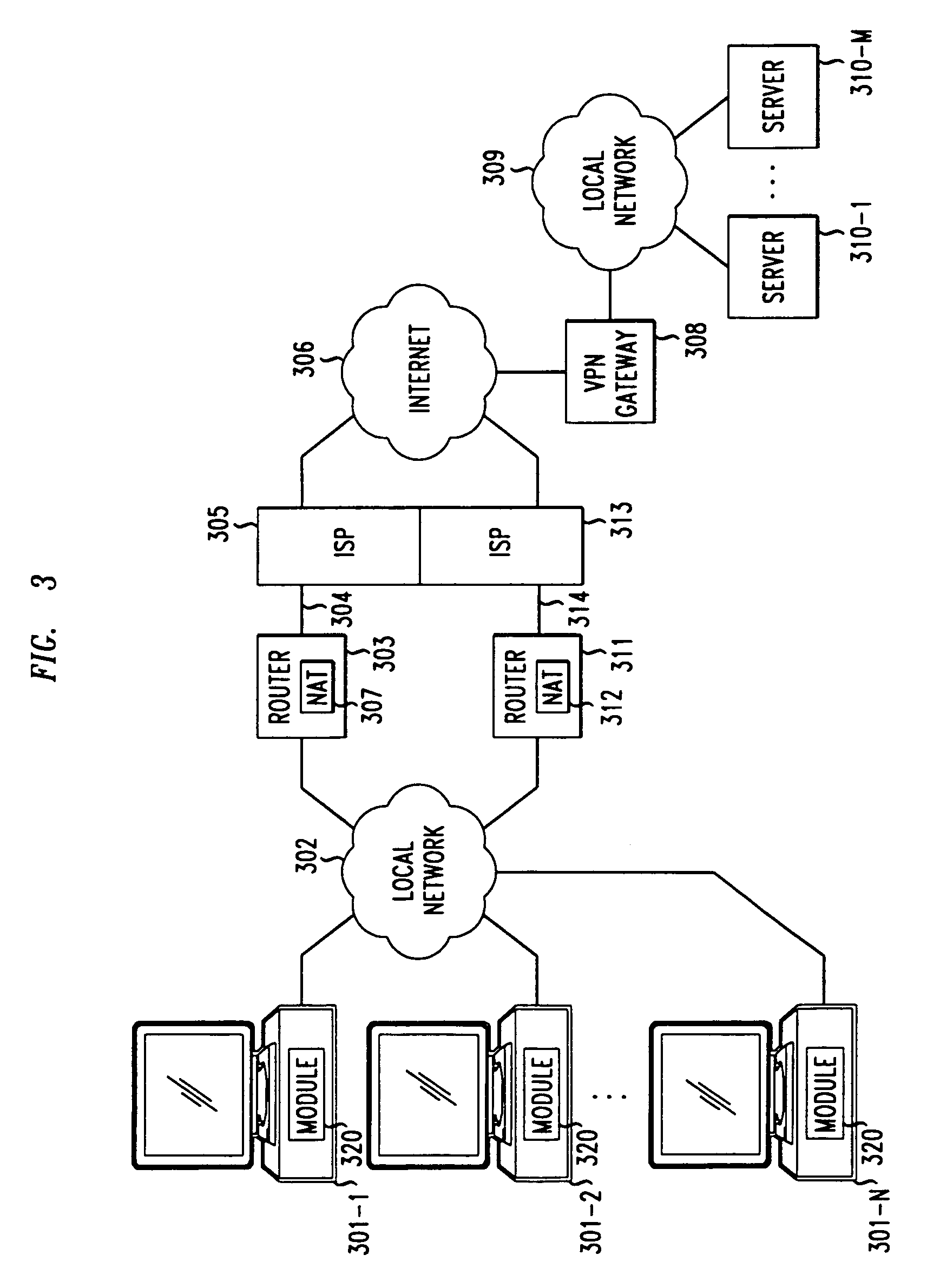Method and apparatus for robust NAT interoperation with IPSEC'S IKE and ESP tunnel mode
a tunnel mode and ipsec technology, applied in data switching networks, instruments, program control, etc., can solve problems such as inability to fully interoperate with nat, difficulty in using network address translation, and inability to fully integrate security architectures with na
- Summary
- Abstract
- Description
- Claims
- Application Information
AI Technical Summary
Benefits of technology
Problems solved by technology
Method used
Image
Examples
Embodiment Construction
[0044]With reference to FIG. 3, a plurality of clients 301-1–301-N is connected on a local network 302. The local network 302 can be an Ethernet, a WaveLAN, or any other private network to which a plurality of operative clients can be simultaneously connected. The local network 302 is connected to a local router 303, which in turn is connected over a shared and typically high-bandwidth link 304 to an ISP 305, which provides access to the Internet 306. Link 304 can be, for example, a cable, a DSL, or a T1 line. Hotels, an airport lounge, a conference center, are examples of facilities at which a shared link could provide Internet connectivity to a plurality of users for connection of their portable PCs. In order to enable the plural clients 301-1–301-N to share the link 304, each client is assigned a private IP address by the local router 303. The non-permanent IP addresses assigned to these clients are from the set of non-routable IP addresses allocated by IANA for private network u...
PUM
 Login to View More
Login to View More Abstract
Description
Claims
Application Information
 Login to View More
Login to View More - R&D
- Intellectual Property
- Life Sciences
- Materials
- Tech Scout
- Unparalleled Data Quality
- Higher Quality Content
- 60% Fewer Hallucinations
Browse by: Latest US Patents, China's latest patents, Technical Efficacy Thesaurus, Application Domain, Technology Topic, Popular Technical Reports.
© 2025 PatSnap. All rights reserved.Legal|Privacy policy|Modern Slavery Act Transparency Statement|Sitemap|About US| Contact US: help@patsnap.com



